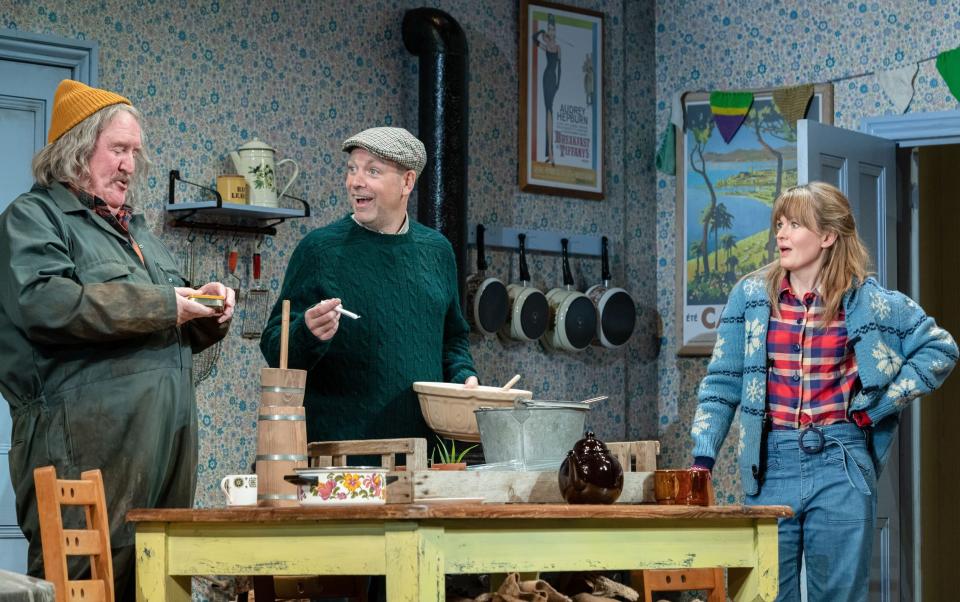The Good Life, review: a crass reworking of the sophisticated sitcom classic

The 1970s, we keep being told, are upon us once again, what with the energy crisis and the empty supermarket shelves and the return of flares to the high street.
It feels apt, then, that The Good Life, the classic sitcom about Tom and Barbara Good, who opt out of the rat race to go off grid in Surbiton, should find itself on stage this autumn, if only to provide a sort of public information service on what knitwear to sport when icicles start forming on the walls.
Of course, The Good Life is also a pinnacle of TV sitcom history, exquisitely skewering a very English suburban snobbery while gently mining a bleaker, existential melancholy. How I wish, then, I could have loved Jeremy Sams's cumbersome two-hour stage version much more than I did.
Sams, who also directs, sticks to the contours of the original while providing new plot pieces. The two male leads are strong – Dominic Rowan, pitch perfect as Tom and Barbara's stuffed shirt neighbour Jerry, and Rufus Hound as the quixotic, bloody-minded Tom who, as the show begins, is in the midst of the mid-life crisis. This will prompt him to give up working for Jerry making plastic figurines for cereal packets and attempt to live off the land.
As Tom’s wife Barbara, Sally Tatum is nicely hearty, if less girlishly wholesome than Felicity Kendal, while Preeya Kalidas has the hardest job shaking off the ghost of Penelope Keith’s performance as the immaculately awful Margot. Kalidas has bracingly perfected the art of the nose-in-the-air flounce, though.

While the original was a masterclass in observational satire, Sams's script is full of crass one-liners and over extended, over emphatic set pieces. There's already been a bit of publicity about the fact Tom and Barbara light up a spliff, although you suspect they probably would have done this on TV too had the script writers been able to get away with it.
No, the bigger problem is that the spliff generates a protracted sequence involving an over-herbalised cake at a dinner party. When what laughs a show produces derive from watching stoned and drunken adults stumble about on stage, doubts about the material creep in.
Then there is sex. The original was famously full of it, although as a child watching reruns in the late Eighties I was oblivious to nudge nudge wink wink gags about rotary circulators. Nonetheless Sams has riskily tried to make 1970s end of pier-style humour a virtue of his production rather than something perhaps better kicked under the crocheted rug. There is a long running gag about the size of an unseen female character's chest.
In ramping up the camp, Sams's production seems intent on going for laughs. Except, I didn't much.


